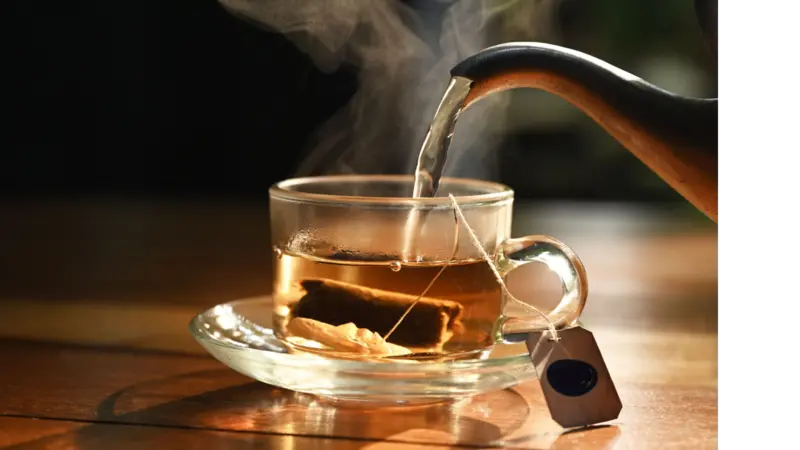
Green Living
Green Living
Microplastics in Tea Bags
In the tea industry, a common practice is to include plastic in the mesh tea bag, which can release billions of microplastics and nanoplastics into a cup of tea.
Microplastics are pieces of plastic smaller than 5mm in size that break down from larger pieces of plastic, and nanoplastics are even smaller, at 0.001–0.1 μm in size. Plastic doesn’t biodegrade, but rather breaks down into smaller and smaller pieces that can end up in the environment, food, water and air. Minimizing the consumption of food or drinks delivered in plastic packaging can help lessen exposure to microplastics.
Most mesh tea bags are made of 20-30% plastic. In a study published in the journal Environmental Science & Technology, researchers found that one standard tea bag made with plastic can release 11.6 billion microplastics and 3.1 billion nanoplastics into a cup of tea. The particles in the tea matched the nylon and polyehtylene terephthalate in the original tea bag.
Microplastics are harmful for both human health and the environment. Studies have shown that microplastics can cause cellular damage, immune disruption, neurotoxicity, reproductive toxicity and cancer. In the environment, microplastics that contaminate the soil, waterways and the ocean can harm fish and aquatic life, change feeding patterns, and cause abnormal behavior, cellular damage and developmental issues.
Safer alternatives include steeping loose teas with a stainless steel or silicone tea strainer, or purchasing tea from brands that have plastic-free teabags. Organic teas may still have plastic in the tea bag, as the packaging is not overseen by organic-certifying organizations. Consumers looking to minimize microplastic exposure should research individual tea brands to determine whether their bags contain plastic.
REFERENCES
Hernandez, L., et al. (2019, September 25). Plastic teabags release billions of microparticles and nanoparticles into tea. Environmental Science & Technology. https://pubmed.ncbi.nlm.nih.gov/31552738/
Organic India. (2021, March 1). Microplastics in tea bags: is there plastic in your tea? https://organicindiausa.com/blog/microplastics-in-tea-bags/


 By
By



